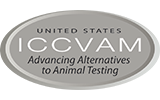Selecting a Minimal Set of Androgen Receptor Assays for Screening Chemicals
Screening certain environmental chemicals for their ability to interact with endocrine targets, including the androgen receptor, is an important global concern. EPA and NICEATM previously developed a model using a battery of 11 in vitro androgen receptor assays to predict in vivo androgen receptor activity (Kleinstreuer et al. 2017). Follow-up work completed in 2020 (Judson et al. 2020) revised the modeling approach to incorporate data from newly available assays and demonstrate that subsets of assays can provide close to the same level of predictivity. These subset models were evaluated against the full 11-assay model using 1820 chemicals, as well as in vitro and in vivo reference chemicals from the literature. Agonist batteries of as few as six assays and antagonist batteries of as few as five assays can yield balanced accuracies of 95% or better relative to the full model. Balanced accuracy of the subset batteries for predicting reference chemicals was 100%. The paper also outlines an approach for researchers to develop their own subset batteries to accurately detect androgen receptor activity using assays that map to the pathway of key molecular and cellular events involved in chemical-mediated androgen receptor activation and transcriptional activity. This work indicates that in vitro bioactivity and in silico predictions mapping to the androgen receptor pathway could be used in an IATA for identifying chemicals that interact directly with the mammalian androgen receptors.



